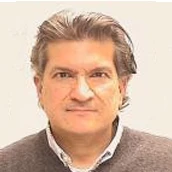 Healthcare worker in Argentina
Healthcare worker in Argentina
Public sector health workers are at the front lines of the fight against the coronavirus, working long hours, often at great risk to their own health. How can governments better support them? One way is by increasing their compensation. However, designing the increase needs to carefully consider the following:
- The health workforce is a large portion of the public sector. In Latin America and the European Union, for example, 12 and 37 percent of health workers are public sector employees, respectively. Hence wage increases may reduce funding available for other critical medical supplies and equipment, particularly in developing countries with limited fiscal resources.
- Wage increases for one category of workers, however well justified, can also trigger demands from other workers, particularly in countries with strong trade unions.
- Temporary salary increases or supplementary payments also tend to become permanent, thereby creating long-term distortions and problems of fiscal sustainability.
The first step, then, is to quickly assess the level and structure of health worker compensation to quantify the amount of additional wages that should be paid. Health facility staff consists of frontline medical staff (doctors, nurses, community health workers) as well as non-medical administrative and support staff. In many World Bank client countries, the total gross wages of health workers will consist of:
- Basic salary. This is based on pay grades in civil service pay laws, or wage legislation for public health workers.
- Overtime allowance or compensation for overtime work. This is usually in the form of a percentage of basic pay for additional hours worked beyond what is normally specified.
- Hazard allowance or harmful work conditions allowance. These will be allowances as a percentage of pay for working conditions that are considered risky to the individual.
- Other allowances. These typically factor in seniority, additional training, or educational qualifications, as well as working in rural areas or remote locations.
- Performance pay. These are additional payments conditional on either inputs (e.g., working hours), outputs (e.g., patients treated), or outcomes (e.g., patient satisfaction).
- Per diems or salary supplements. These are usually for attending workshops or training and can be a significant (more than 10 percent) proportion of gross wages.
Cross-national data on health worker wages is very limited. The data that the World Bank has for 10 countries in Latin America and 27 in the European Union shows that while health care workers do enjoy a premium over workers in other sectors of the economy, the premium decreases with country income levels. For countries in the upper income category, they experience a penalty compared to similar workers in lower-income countries (controlling for sex, education, and location). These averages, however, hide variations across different categories of health workers (medical workers represent between 20 and 50 percent of all health care sector workers for countries in Latin America and the European Union).
Principles for increasing remuneration: keep it simple, and temporary
The following considerations should guide the design of additional remuneration for health workers :
- Legitimate: Governments need to clearly communicate the purpose of the salary increase and the categories of workers who are eligible. Given that all workers in a health facility are likely to be working extra hours and taking additional risks, the simplest criteria would be to include all health workers (medical and non-medical staff) in all facilities in the COVID hotspots. For fiscal reasons, governments may want to exclude non-medical staff; but this can breed resentment and disharmony within facilities.
- Temporary: The supplemental pay should be a temporary “special allowance” that is authorized by a government decree, and it should be removed when the crisis ends. It should be a fixed nominal amount (instead of a percentage of pay) so that it is easy to administer and given to all health workers in designated localities. Governments should avoid changes to basic pay specified in the public sector salary legislation of the country, as these are likely to become permanent. The supplementary wages should be authorized on a monthly or quarterly basis, to provide governments with flexibility to adjust the amounts as the crisis evolves.
- Easy to verify: Given that government capacity is stretched to the limits, any salary increases that require costly verification should be avoided. This criterion rules out performance incentives, as these require independent verification of the increased or improved inputs, outputs, or outcomes that condition the incentive.
- Equitable: The pre-crisis wage structures are often inequitable and not transparent in many World Bank client countries. Often medical workers with similar skills and experience earn significantly different wages based on idiosyncratic factors that are difficult to justify. Doctors also often earn significantly more than nurses. The supplemental pay should try to reduce these pre-crisis inequities in wages to the extent possible. One way would be to provide lump sum payments to health workers, rather than as a percentage of pay. These would be easier to administer as well as more progressive. The exact amount of the supplement would need to be based on data, but a good rule of thumb is that it should be a minimum of 20 percent of gross wages. However, the amount would have to be determined by the available fiscal space.
Frontline health workers are critical in the fight against COVID-19. Increasing their compensation is one way that governments can demonstrate their support for the brave individuals who are at the forefront of the pandemic.



Join the Conversation